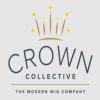How to Design Labels That Capture Customer Attention

In today’s competitive market, businesses must create labels that stand out and capture the attention of customers. Custom industrial labeling plays a crucial role in branding, product identification, and marketing. A well-designed label not only provides essential information but also influences purchasing decisions. Here are some key aspects to consider when designing labels that attract customers.
1. Understanding Your Target Audience
Before designing a label, it is important to know your target audience. Research their preferences, buying behavior, and what appeals to them visually. If your product is for a younger demographic, consider using bold and vibrant colors. For a more sophisticated audience, minimalistic and elegant designs may work best.
2. Choosing the Right Colors
Colors have a psychological impact on consumer behavior. Red and yellow are often associated with excitement and urgency, making them popular in the food industry. Blue conveys trust and professionalism, ideal for medical or technology products. The right color combination will help your label stand out while aligning with your brand identity.
3. Typography Matters
Font selection is crucial in making labels readable and appealing. Choose fonts that are easy to read even from a distance. A combination of two or three fonts can create a balanced and engaging design. Avoid overly decorative fonts that may compromise legibility.
4. Incorporating High-Quality Graphics
A visually appealing label should have high-quality graphics or images that enhance the design. Custom industrial labeling often includes brand logos, symbols, or product illustrations. Ensure that images are high-resolution and relevant to the product.
5. Utilizing White Space Effectively
White space, or negative space, helps prevent clutter and makes the label more aesthetically pleasing. It enhances readability and highlights the important elements of the design. A well-balanced layout ensures that all necessary information is easy to find without overwhelming the viewer.
6. Adding a Unique Selling Proposition (USP)
Your label should communicate what makes your product unique. Whether it’s an eco-friendly feature, organic ingredients, or superior quality, highlighting the USP can influence buying decisions. Keep the message concise yet compelling.
7. Selecting the Right Material
The durability and texture of the label material matter, especially for industrial products. Waterproof, heat-resistant, or UV-protected labels ensure longevity. The right material enhances the overall look and feel of the label, reinforcing brand credibility.
8. Compliance with Industry Standards
Depending on the industry, labels must meet certain regulatory requirements. Include necessary details such as ingredients, usage instructions, safety warnings, and barcodes. Ensuring compliance avoids legal issues and builds trust with customers.
9. Incorporating Interactive Elements
Modern labels can integrate QR codes, augmented reality (AR), or NFC technology. These elements provide additional product information, promotional offers, or interactive experiences, making labels more engaging.
10. Testing and Gathering Feedback
Before finalizing the label design, conduct market testing. Gather feedback from focus groups or potential customers to identify areas for improvement. Small adjustments can make a significant impact on how effectively the label captures attention.
Final Thoughts
Custom industrial labeling is more than just a branding tool; it is a powerful marketing asset that influences consumer behavior. By focusing on design elements like colors, typography, graphics, and interactivity, businesses can create labels that attract customers and enhance brand recognition. Investing in a well-designed label ensures a lasting impression and a competitive edge in the market.



